Just how much do you have to spend to get an affordable enduro bike that is ready to go, out of the box, with no extra costs? We review 9 of the best affordable enduro bikes in this group-test to find out.

Table of contents
Sometimes you just hit the sweet spot. The point when you’ve drunk exactly the right amount of beer to become a pool god who cannot miss, or that moment in your life when your income first exceeds your outgoings, just before kids come along. The sweet spot. But do the same rules apply when you buy a bike? At the very affordable end of the spectrum, the more you spend the better the bike becomes, but with top-of-the-line bike prices now nudging an eye watering five figures, surely there‘s a sweet spot in the middle where you get all the performance you could ever really need?
When it comes to buying and upgrading bikes you can just keep on spending. Sometimes that’s half the fun, but at what point do you have everything you really need
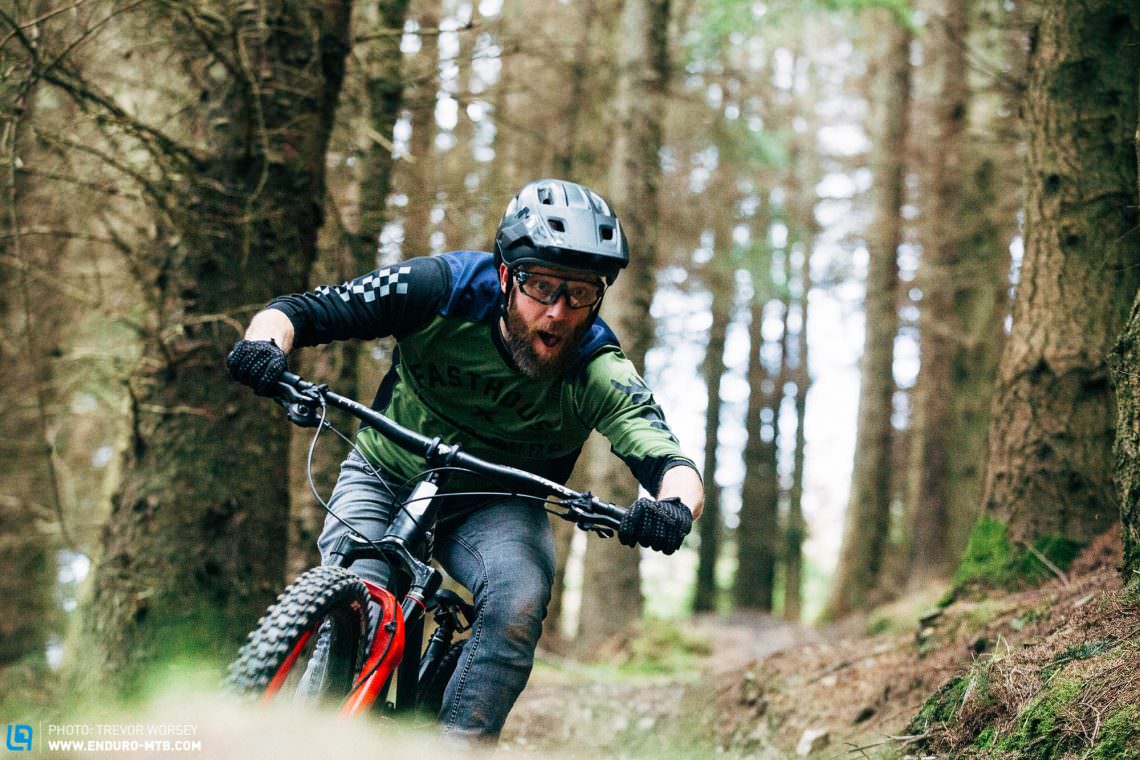
You set the price point for this test, not us
We asked, you responded, we listened. In our annual 2019 reader survey, we asked you how much you will spend on your next new bike. Over 16,000 of you responded and your average price point was just less than € 3,500. We know you’re all passionate bikers, so is € 3,500 the sweet spot? The point at which you can buy a bike without compromise? To find out, we invited the brands you expressed the most interest in to take part in our test. Some were excited, others declined and in the end we put nine of the hottest enduro bikes under € 3,500 to the test.

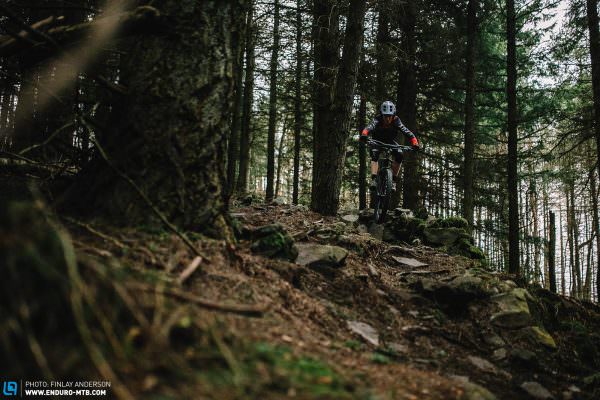
The enduro bikes in this group test
This price point is hot-property but is also the biggest challenge for product managers. It’s easy to build a great bike when money is no object, but to specify good suspension, good brakes and good wheels and tires while keeping the cost below € 3,500 isn’t easy. Careful choices need to be made and to succeed, a product manager needs to really understand their job and know what makes a great bike. When calling in the bikes, we were clear on one thing. We the brands to send their most bang-for-buck models. A fancy carbon frame adorned with budget components would not do well. We were looking for a balanced build free of weaknesses. Aluminium was the obvious frame choice, but direct sales champions YT and Propain were quick to counter that they had carbon models that they believed had no compromises. YT sent a € 3,199 Capra 29 Comp and Propain a € 3,494 Tyee CF with a customised build from their online configurator. Canyon went a different route, sending over their aluminium, € 2,799 Torque AL 6.0 and undercutting the competition by a huge margin.

Nukeproof are on a roll at the moment. Their € 4,299 290 Pro model performed exceptionally in our high-end group test where we tested the 17 most exciting enduro bikes of 2020, so they were keen to send over the more affordable €2,999 aluminium Nukeproof Mega 290 Expert here. Merida previously took top honors in our short travel group test with their high-end ONE-TWENTY 8000 and this time they offered us their ONE SIXTY 700 with an alloy frame. Always offering good value, Giant sent over their € 3,399 Reign 29 SX with a high-end build kit that made us question the price tag. Trek previously took our Best Buy award with their € 2,999 Slash 8 in our 2019 affordable enduro bike group-test, so they sent the same bike again. Could it be a second victory in a row, or have things changed? Then came the two wild cards. The big-hit, big-attitude, €3,299 Privateer 161 and € 3,498 Ibis Ripmo AF with a coil shock upgrade both boast rock’n’roll intent with burly builds. The carbon Ibis Ripmo scored top honours in our Trail Bike group test, but with a 1.6 kg weight penalty is the Ripmo AF still as versatile? The bikes arrived and looked insanely good for a mid-price shootout. This was going to be fun.
| Bike | Price | Weight | Travel f/r | Wheel Size |
|---|---|---|---|---|
| Canyon Torque AL 6.0 (Click for review) |
€ 2,799 | 15.80 kg | 180/175 mm | 27.5″ |
| GIANT Reign SX 29 (Click for review) |
€ 3,399 | 15.70 kg | 170/146 mm | 29″ |
| Ibis Ripmo AF Coil (Click for review) |
€ 3,498 | 15.70 kg | 160/145 mm | 29″ |
| MERIDA ONE-SIXTY 700 (Click for review) |
€ 2,999 | 15.10 kg | 170/165 mm | 27.5″ |
| Nukeproof Mega 290 Expert (Click for review) |
€ 2,999 | 15.40 kg | 170/160 mm | 29″ |
| Privateer 161 (Click for review) |
€ 3,299 | 15.90 kg | 170/161 mm | 29″ |
| Propain Tyee CF (Click for review) |
€ 3,494 | 14.80 kg | 170/160 mm | 29″ |
| Trek Slash 8 29 (Click for review) |
€ 2,999 | 14.40 kg | 160/150 mm | 29″ |
| YT Capra Comp 29 (Click for review) |
€ 3,199 | 15.20 kg | 170/160 mm | 29″ |
| Ø € 3,198 | Ø 15.30 kg |

Why is bike XYZ not included?
Why, no Santa Cruz, why no Specialized why no ‘X’? At such an affordable price point, many brands either had no bike to offer, or knew their bike had compromises that would lower their rankings in the test. However, there are some notable omissions from this test. In particular, where are Commencal and Radon? Commencal were keen for us to test the Meta AM 29 Essential, but coronavirus lockdowns in Andorra made it impossible. The timing also didn’t work for Radon – perhaps they have something new coming. Ultimately, this was not the test for boutique brands but a test that appealed to the brands who champion value as well as performance. Ultimately, brands who truly understand which components really add to the riding experience.



Where and how did we review the enduro bikes for this group test – dealing with the unexpected
When we planned this group test back in November 2019, we could have never imagined the possibility of a pandemic sweeping the globe. Faced with the ever increasing likelihood of lockdowns, we had to be adaptable. We were both lucky and unlucky. Lucky that we received all the bikes early on, long before any lockdowns began, allowing us to complete our extensive testing on the amazing enduro trails of the Tweed Valley, Scotland, However, we were unlucky that changing restrictions meant all the final discussions and collaborative findings had to be debated via Zoom, rather than a trail beer – a first for us. In this test you will notice a lack of group riding shots and high-fives. We were a group, but a socially distanced one. However, at this challenging time, more than ever, it was our goal to deliver you this very important group test, letting you know which bike you should invest in as soon as we can all return to the trails. The bikes were tested hard, on natural enduro trails, rugged washed-out downhills and on physically demanding all-day loops – probably exactly the same sort of riding you love.
Less trouble, more fun! Affordable components are more reliable than ever – there were hardly any defects in this test!

Quality not quantity – Who tested the bikes?
To get a comprehensive and objective impression of a bike, it is important that it is ridden by several experienced test riders. For this review we assembled a team with decades of combined experience and very different riding styles.

Trev is on a mission to disprove the myth that you can’t teach an old dog new tricks, determined to keep up with the young guns. Happiest on the steepest trails, Trev looks for balanced handling, well designed suspension kinematics and components that are tough enough to survive the rigours of Scotland.
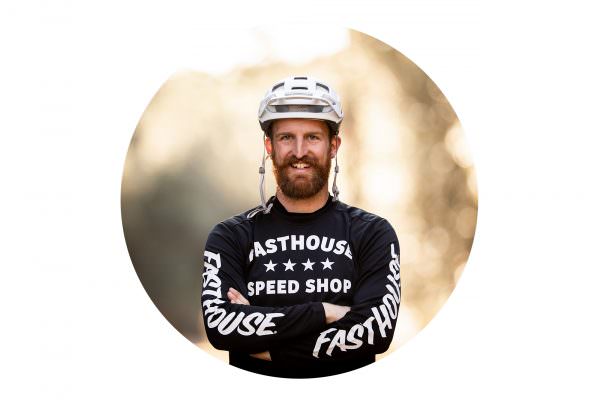
Christoph Bayer needs no introduction. With knowledge gained from riding more bikes than anyone else on the test team, he is a walking bike wikipedia. Christoph lives to ride the best trails and looks for the complete package, engaging handling, wise component choices and a geometry that works for riders of all levels.
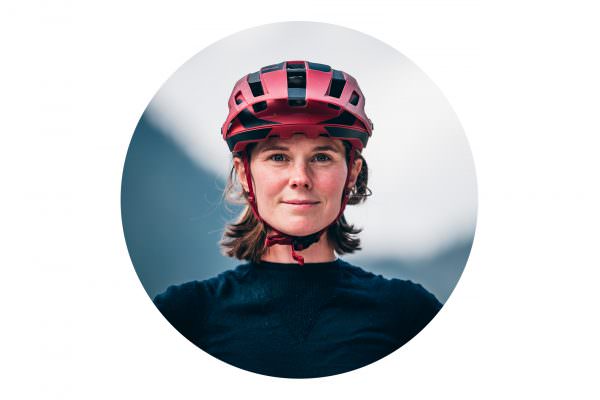
While Cat has very little interest in anti-squat, leverage rates and offset of the bikes tested, on the climbs she is a monster on the pedals and was happy to test the bikes’ efficiencies. On the descents, Cat looks for confidence inspiring handling and intuitive cornering, keeping it fun and not scary.
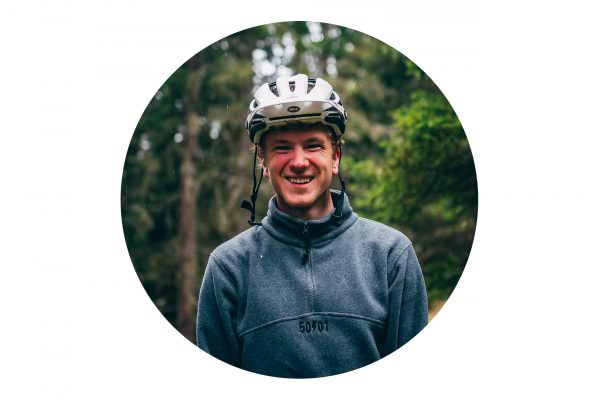
Some would say that Finlay is gifted with the bravery (stupidity, haha) of the young, and as such he is always the fastest into any corner, though not always out. Sideways as much as forwards, Finlay can be relied upon to put the bike’s durability, brakes and tires to the ultimate test. Finlay values playful handling, supportive suspension and an affordable price point.

The big hit specialist. Felix is an avid racer with the delicate touch of a sledgehammer. On the trails, you will frequently find Felix in the air above your head. A qualified engineer, Felix misses nothing, seeking out weaknesses in componentry and pushing budget dampers to the limit. Felix looks for a high performance build, strong tires and geometry that rewards hard riding.
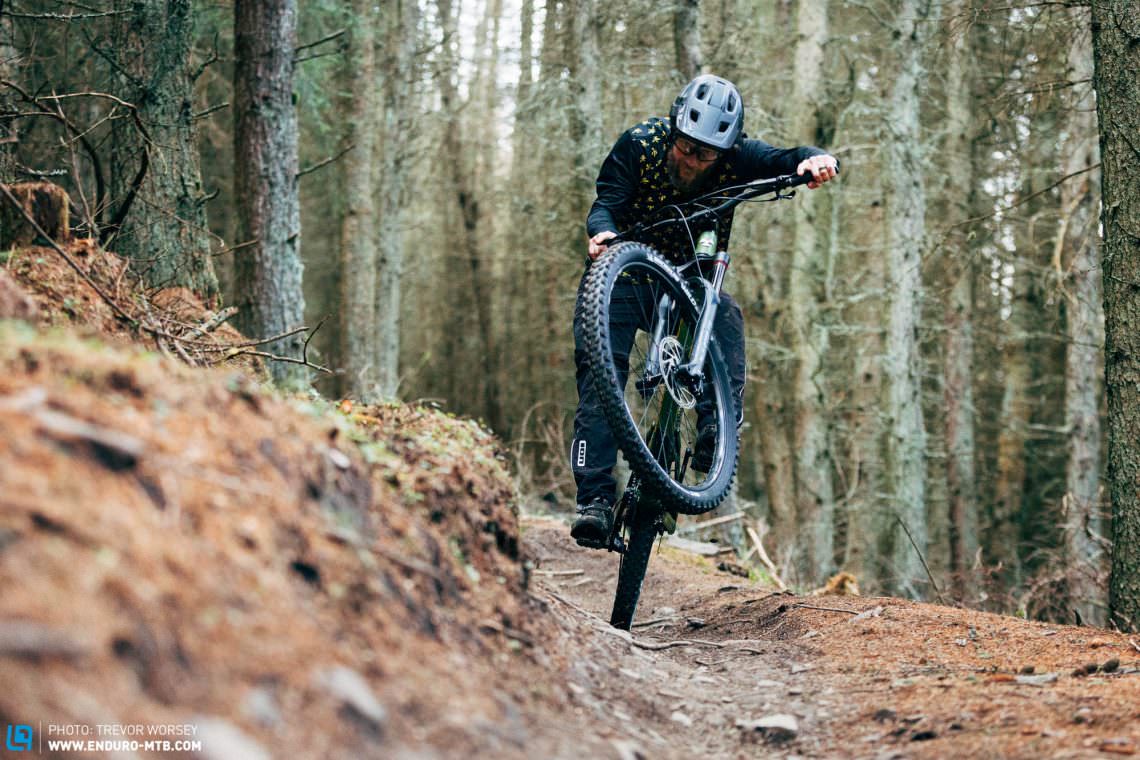
10 key findings from our affordable enduro bike group test
Are affordable bikes heavy?
The popular saying goes “strong, light, cheap – pick two”. This is perhaps an over-simplified way of looking at it, as in reality there are two questions here. Can you have an affordable bike, with a suitable build kit that is still lightweight and does it really matter if it’s heavy? The bikes in this test are certainly no flyweights, weighing in at an average of 15.3 kg. The heaviest bike in the test is 15.8 kg (Canyon Torque) and the lightest 14.4 kg (Trek Slash). Do the lightest bikes pedal uphill significantly better? Not always. Ultimately a heavier bike will demand some extra watts from the legs during a long day in the saddle. However, we have found that good suspension and geometry play a far larger part than a few hundred extra grams when winching up the service roads. Take the Privateer 161 , with its steep seat angle and supportive suspension. When compared to the 0.7 kg lighter YT Capra Comp 29 with its laidback climbing position, the Privateer soon spins ahead on the climbs. You should never judge a bike by a single number alone, and instead consider the sum of the seating position, the efficiency of the suspension and the type of tire fitted. To find out more, check our extended opinion article about the weight of MTBs.
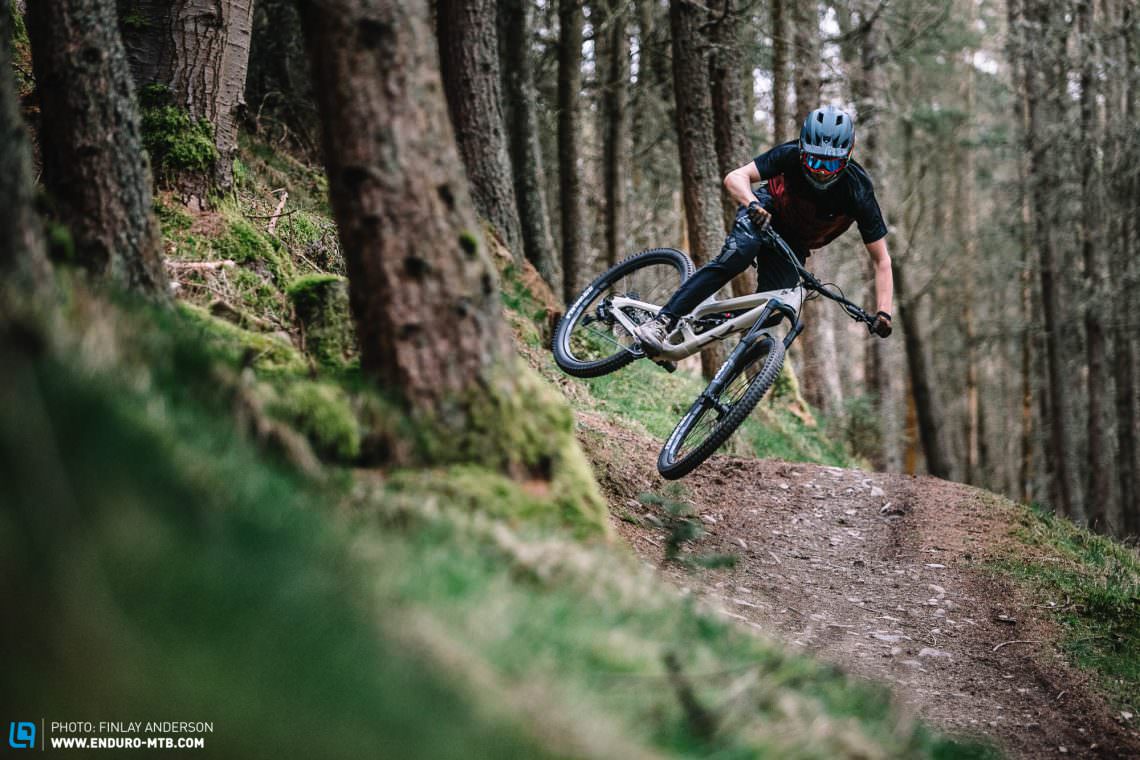
Don’t judge a bike by its suspension travel
Another value you should never judge a bike on is its amount of travel. How can the 145 mm travel Ibis Ripmo AF easily outpace the 165 mm Merida ONE-SIXTY 700 downhill? Why does the 170 mm travel Capra feel like it has 200 mm of travel? It’s not about how much travel a bike has, but how it delivers it. The best enduro bikes in this test use their travel sparingly, preserving their geometry as they power through rough terrain without bottoming out and maintaining enough support to allow you to weight and unweight the bike easily for grip. This nirvana is down to a balanced partnership between the kinematics and the shock. If a bike has an overly linear leverage curve it puts increasing demands on the shock to control the end of the stroke. This is the case for the Merida ONE-SIXTY, which feels very comfortable and plush at medium speeds, but gives up its travel too easily in rough terrain, where it feels unpredictable. In contrast, bikes with a very progressive leverage curve like the YT Capra and Privateer 161 can feel harsh and overdamped at medium speeds or on mellow terrain, but really come alive when the hits get bigger and faster. The best all-round handling bikes in our group test, the Nukeproof Mega and Propain Tyee CF manage to blend the compromise of small bump sensitivity with progressive end stroke into kinematics that are anything but compromised. If you want to top up your suspension knowledge, check out our feature on suspension kinematics and how they influence a bike’s behaviour.
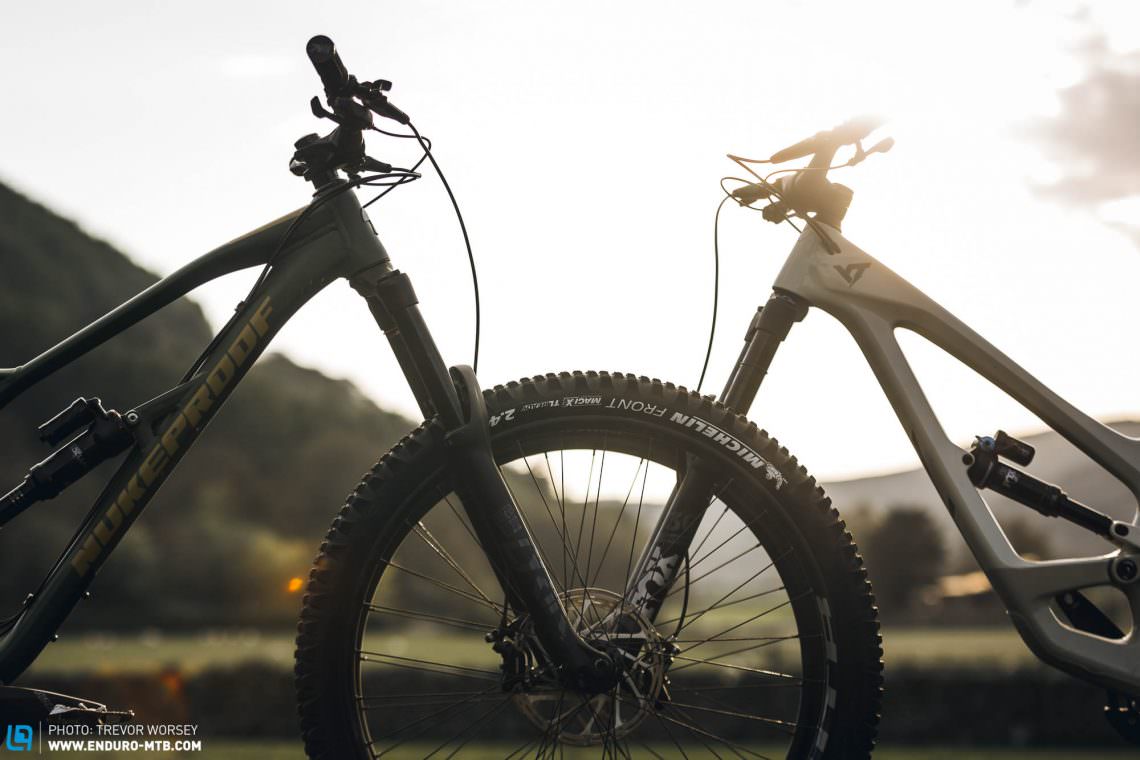
27.5” wheels aren’t dead, but they are now a niche
We are just going to come out and say it. 27.5” enduro bikes are dead! Wait, before some of you start sharpening the pitchforks, let us explain. It’s true that a bigger wheel will never rival a smaller wheel when it comes to agile direction changes, it’s simple physics. However, when it comes to everything else, including grip, composure, stability, confidence and speed, the 29” takes every round. For an enduro bike, with a focus on moving fast down gnarly terrain, most riders of average height and above will find it easier, safer and more fun on bigger 29” wheels. Are there exceptions to this rule? Yes there are, but only for an increasingly niche target group riding size Small frames or smaller. 27.5” still has a place though. Take the Canyon Torque which isn’t really an enduro bike at all. It’s a park orientated play bike, targeted at riders who have whips and rotations in their bag of tricks and uses the smaller wheels to its advantage. The Merida ONE SIXTY 700 on the other hand feels instantly outclassed when going back to back with the other, struggling to keep up with the best in this test on a full-on enduro stage. For most riders, 29” wheels are the most advantageous choice.
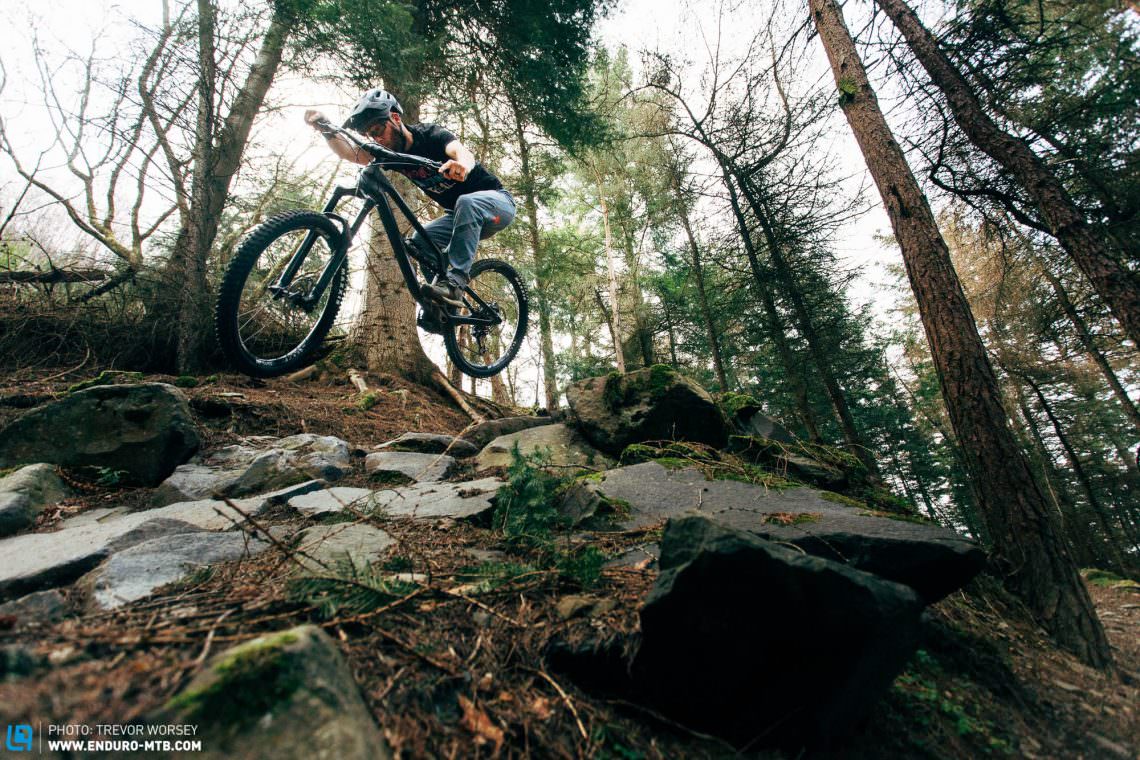
Going back-to-back between a 27.5” to a 29” bike really highlights just how much easier and more confidently the bigger wheels speed through rough terrain.
Seat tube angle – steeper isn’t always better
Seat tube angle was the talk of 2019, with a steeper angle claimed to increase climbing comfort and performance. In many ways we agree, but despite the entire market moving one or two degrees steeper, we still have no upper limit to define the goalposts. In this group test we have bikes with seat angles ranging a whopping 6 degrees (from 74° on the Canyon Torque to a steep 80° on the Privateer 161). One thing to consider is that the seat tube angle measurement isn’t standardized and the angle isn’t static. Most saddles have around 2 cm of fore/aft adjustment by sliding the saddle on its rails. Moving the seat fully to the front, or rear, of the rails has a big impact on the effective seat tube angle. A bike with a 77° seat tube angle has an effective range of 75.3–78.6° degrees. The steep 80° seat tube angle of the Privateer 161 positions the saddle 3.2 cm closer to the bars when compared to a bike with a 77° seat tube angle. This puts the rider further forward in relation to the bottom bracket for a more comfortable, upright position on steep climbs. However, on flatter terrain, this forward position is demanding on the forearms and palms, making the Privateer 161 a steep-up, steep-down specialist, and too niche for many riders.
Bikes like the Trek and YT feature a distinctive kink in their seat tube, meaning that the actual angle of the seat post is slacker thany the geometry table might suggest. On these bikes, taller riders with long seat-post extensions will experience a slacker effective seat tube angle than shorter riders. Seat tube angle, like most geometry numbers, is a compromise and there is no perfect seat tube angle for everyone, The angle needs to be steep enough to give a workable range of seat positions for enduro riding, which tends by its definition to be steep uphill to access the steep downhills. Most bikes now feature a 76–78° seat tube angle which we think is good for an all-rounder. Any steeper and you begin to lose versatility if you intend to use your enduro bike on mellower terrain.
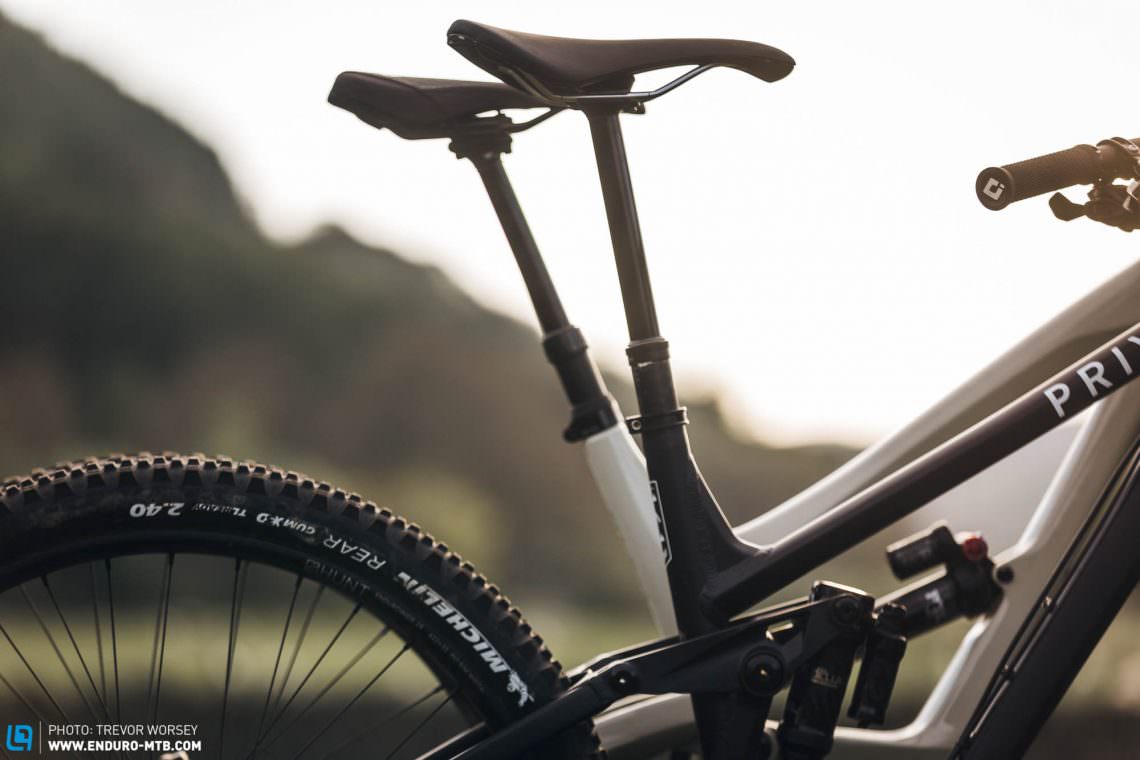
By sliding the saddle on its rails, a bike with a 77–78° seat tube angle offers enough range of adjustment for most riders. Much more or much less limits versatility.
Sizing bikes on reach, not seat tube length
Now that very tall riders can opt to fit a 200 mm dropper post for maximum height and sufficient post drop, we have less need for overly long seat tubes. A shorter seat tube allows more flexibility for riders at the shorter end of the recommended size to size up to have a longer reach if they want a more stable bike. Using a longer dropper post also allows riders to get the seat lower down on the descents for more fun. In this group test, the average seat post height on the Large bikes was 452 mm. However, there was still a whopping 51 mm difference between the lowest and highest seat tube, with the Ibis Ripmo AF at 419 mm and Merida ONE-SIXTY at 470 mm. The shorter seat tube bikes in the test such as the Canyon Torque, Ibis Ripmo AF, Privateer 161 and YT Capra (440, 419, 450 and 438 mm respectively) allow even short-legged riders to benefit from a 170 mm dropper (even if one is not fitted as standard). The taller bikes such as the Giant Reign, Merida ONE-SIXTY and Trek Slash (464, 470 and 468 mm respectively) all limited frame size choice for shorter legged (not necessarily shorter height) riders.
Is it worth paying more for a carbon bike?
We expected this test to draw out the best aluminium enduro bikes given theprice point. However, after communication with some brands, they preferred to promote a carbon model after working hard to get them under our €3500 price ceiling. The question is, should you invest more in a carbon fibre frame? We have two carbon bikes in this test in the form of the YT Capra and the Propain Tyee. As a direct-sales brand with a tradition of high-specs at affordable prices, the YT should steal the show when it comes to the build. However, while the carbon fibre frame of the Capra Comp is sexy as hell, it’s clear that some concessions have been made to hit the €3,199 price point, with a lower-spec FOX 36 Rhythm fork and heavier overall build. At 15.2 kg it’s no lighter than the rest of the field. Propain have been more successful in their use of carbon. The Tyee CF has a beautifully designed carbon frame and a build specification with a great fork and few flaws, but it is a little more expensive. Durability is also a factor to consider. While carbon frames are extremely strong, there is more uncertainty if you damage one. For the same reasons we are not fans of carbon wheels if you ride on rocky terrain. Aluminium is a more worry-free option if you regularly crash your bike.
But carbon is stiffer you say? The Propain Tyee CF does away with the myth that carbon bikes are stiffer for more performance. We found the long, uninterrupted seat stays introduce flex to the rear end of the bike, despite being made of carbon. Overall, our testing revealed that at this price point, the frame material has far less impact on ride quality than the chosen components, geometry and kinematics. As such if you are buying on a budget we would make our choice based on the overall package, not just the frame material.
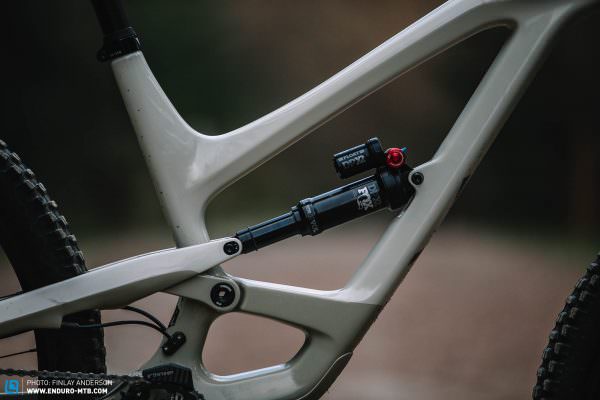

The perfect chainstay length – it’s not how long or short, it’s how balanced!
The average chainstay length of the bikes in this test is 438 mm (distance from bottom bracket to rear axle) and the average front centre is 800.8 mm (bottom bracket to front axle) giving an average front to rear ratio of 1.82. It’s interesting to note that the bikes with longer chainstays in relation to the front centre, like the Nukeproof Mega, Propain Tyee and Trek Slash (1.79, 1.81 and 1.80 respectively) proved the easiest bikes to handle for most riders, whereas bikes with a longer front centre in relation to the chainstays, such as the Privateer 161 and Giant Reign (1.86 and 1.87 respectively), required a more demanding riding style to weight the front wheel through turns. As bike geometry evolves, experience is showing us that as bikes grow longer, it’s important to increase chainstay length proportionally too. We found the bikes with chainstays of around 445 mm combined with a roomy but not extreme reach of around 470 mm (for a size L bike) are the most intuitive handling bikes for most 180–185cm tall riders. Therefore, it’s no surprise that the winning bikes, the Nukeproof Mega and Propain Tyee CF, have longer chainstays at 450 mm and 445 mm and a more moderate reach (470 and 471 mm).
We are still seeing manufacturers stretching their front centres, but keeping the rear of the bike super short.This can only lead to an imbalance in the handling, needing big rider weight shifts to stay in control.
You need a coil shock for the best downhill performance, right?
Three out of the nine bikes in this test run coil shocks. Are we finally starting to see performance of bikes held in higher regard than their weight? The belief that you need a coil shock to go faster downhill is a myth. The YT Capra and Nukeproof Mega are the most capable descenders in this test and both run air shocks. However, in some cases a coil shock can be a great performance upgrade. Take for example the Propain Tyee CF which has a very progressive leverage curve (high leverage at the start of the travel reducing to less at the end), that is very well suited to the linear nature of coil shocks. When we first tested this bike with an air shock, we found it lacked sensitivity. In contrast, fitting a coil shock improves the feel of the suspension, increasing grip and control. However, on the Giant Reign SX 29, the addition of a coil shock polarised our testers. While the shock is immensely sensitive and delivers a very active ride, we found the transition from supportive mid stroke to full bottom out was easily overcome. A more progressive air shock would provide increased support for big hitters. A coil shock can be a real benefit, but only if the suspension design of the bike is compatible.
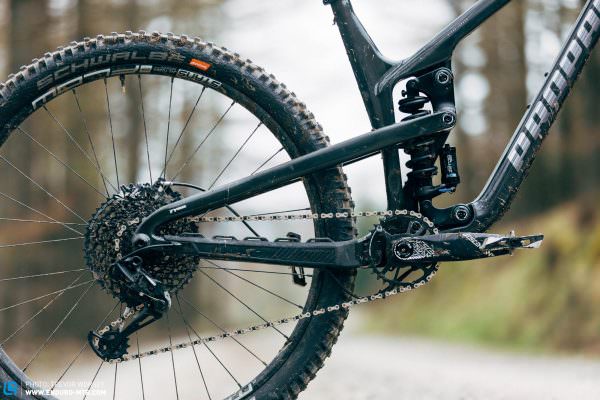
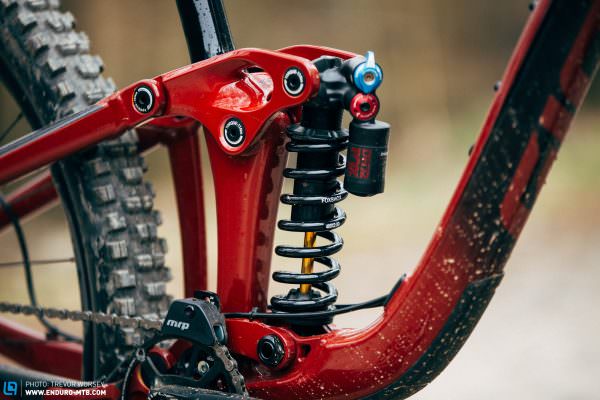
All you need without hidden costs
This year, more than ever, we found we experienced less specification problems with the group test bikes. There were still a few componentry howlers, for example underpowered SRAM GUIDE R brakes have no place on the Ibis RIPMO AF and spoil the bike, the FOX Rhythm 36 on the YT Capra feels underwhelming at times and the Giant’s grips fell apart very quickly, but overall all brands delivered a well thought out package for the price point, with very few fundamental flaws. The overall ride experience of a bike will always be dictated by its weakest component and many buyers face hidden costs if a brand has snuck in some poor product choices. Indeed, it will often cost more to replace them than was saved on a slightly cheaper model. With the exception of the examples already given and possibly changing tires to suit local conditions, all the bikes in this test are ready to go. On the best bikes, such as the Propain and Nukeproof, we wouldn’t change a thing.

Why spend more?
If these bikes are ready to go out of the box, is there any point in spending more?
If you’re looking for more of an all-rounder bike that can pedal uphill faster and still possesses the same gravity qualities, then spending more will get you a more versatile bike. As we discussed, weight is not the main factor when predicting how a bike will climb, but a low weight does help. On average, the bikes in this group test are 0.9 kg heavier than in the high-end, € 7,373 average cost enduro bike group test – a considerable disadvantage. Take for example the 15.7 kg Ripmo AF. It’s a whopping 1.6 kg heavier than its eye-wateringly expensive € 8,139 Ripmo 2 carbon sibling. While the carbon model probably wouldn’t be any faster downhill (it may even be slower), it would open up a huge gap on the climbs. Overall, € 3,500 seems to be the natural sweet spot for ‘gravity’ performance, where you get maximum bang for your buck. At this price point you can buy an exceptionally good bike with great downhill performance and a rounded build kit. Spending more will only improve uphill performance, looks and car-park status.
Tops
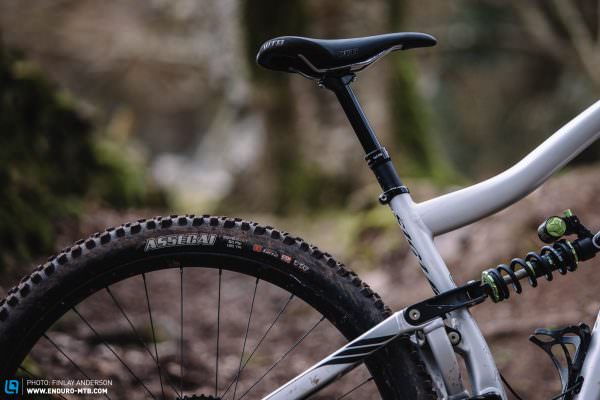
Even short legged riders will be able to run a long dropper post or size up with the Ibis Ripmo AF, which has a super short seat tube.

Much of the Privateer 161’s powerful performance stems from the RockShox Lyrik Ultimate fork’s composure and control. The Charger 2.1 damper is outstanding.
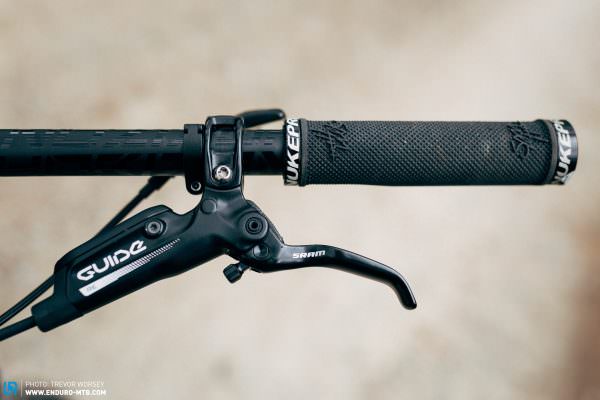
The Guide RE brakes on the Nukeproof Mega may not be as sexy as top-end CODE brakes, but they use CODE calipers and are very effective.
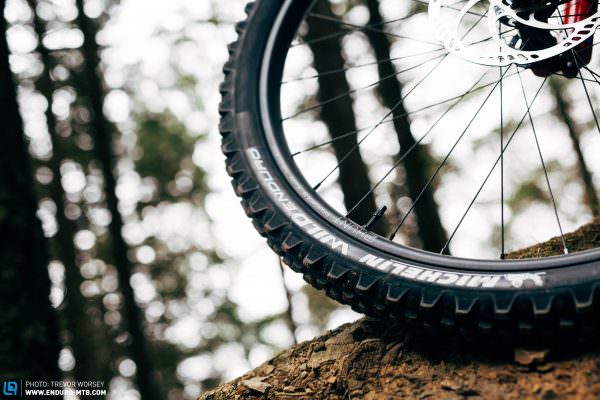
Michelin’s new Wild Enduro tires were fitted to tthe Nukeproof and Privateer. They impressed us with their grip and sidewall stability.

After testing the Propain Tyee CF with both an air and coil shock, we can conclude that the highly progressive linkage works best with coils.

The Fox 36 Performance Elite, GRIP2 fork is an unexpected surprise at this price point, offering top-tier performance at the front of the Giant Reign.
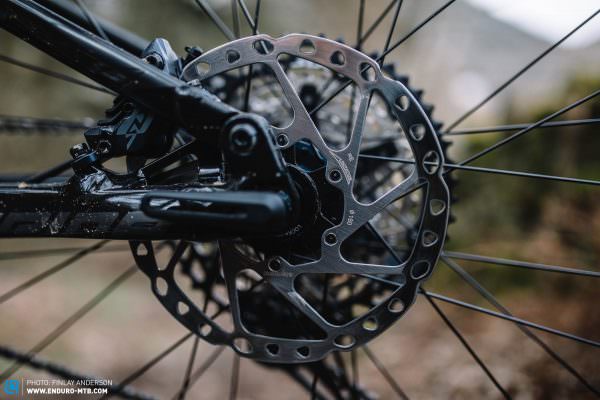
The Shimano SLX four-piston brakes work flawlessly on the Merida ONE-SIXTY 700, offering powerful deceleration with enough modulation.
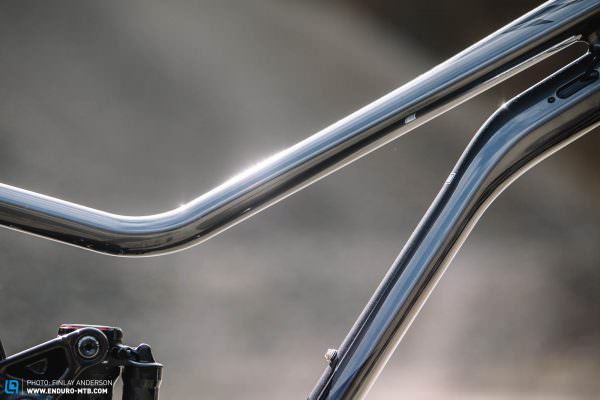
The black-chrome paintwork of the Merida ONE-SIXTY 700 is drop dead gorgeous. It’s just a shame that the frame itself doesn’t quite live up to the appeal.
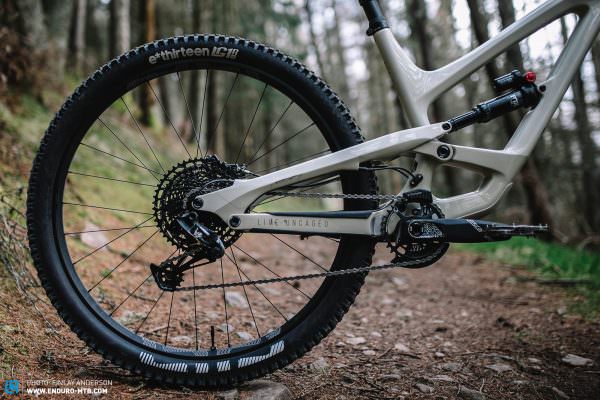
Never a truer statement. The YT Capra is a downhill beast! We’re not sure we could go any faster on a full-bore DH bike.
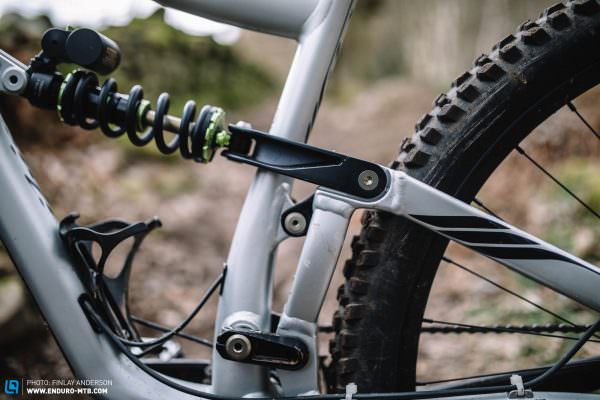
The beating heart of the Ibis Ripmo AF is undoubtedly the superb DW-link suspension, delivering efficiency and a fierce bump-eating appetite.
Flops
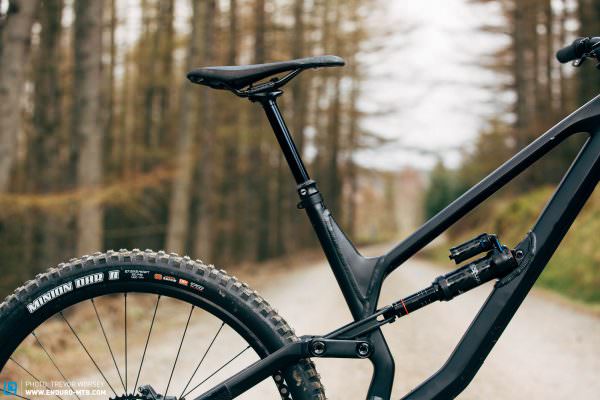
The Canyon Torque’s laid back seat angle and long travel means uphills are a tedious affair. This is not a bike to do much climbing on. It lives for lift accessed bike park terrain.
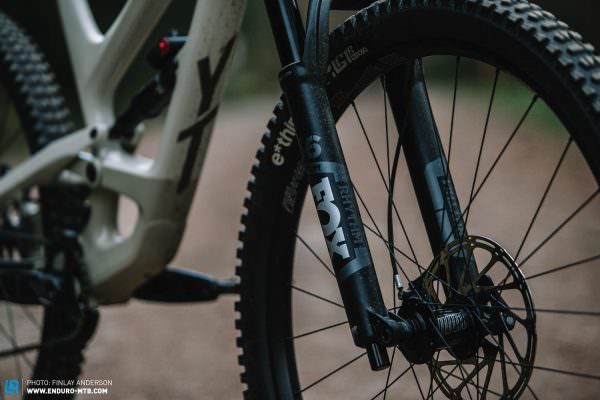
The Fox Rhythm 36 is not a bad suspension fork, it’s just not a great one. The YT Capra deserves a great fork.
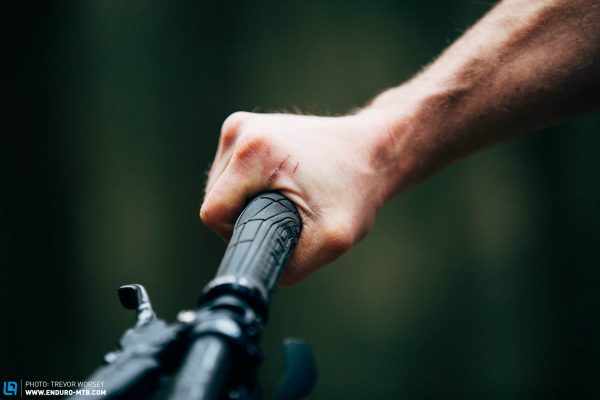
The Giant Reign’s own brand grips quickly snapped inside, allowing the outer part of the ‘single clamp’ grip free to twist freely.

A coil shock can bring huge benefits to a bike. However we found the coil shock on the digressive kinematics of the Giant Reign blew through its travel a bit too easily.
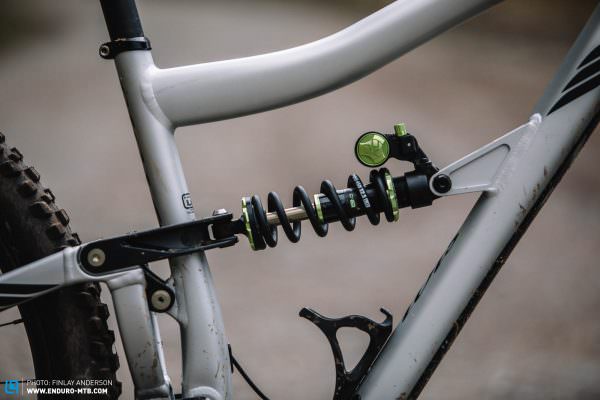
The build quality of the Ibis Ripmo AF is a little rudimentary and agricultural, and comes with a few squeaks around the suspension pivot. It goes like a bullet though.

The frame protection on the new Privateer 161 works perfectly, but looks like a hack job. That said, we’ll take the superb fork over fancy moulded frame protection anyday.

The RockShox Yari RC has always been a solid performer, but we found in this 170 mm travel version on the Merida ONE-SIXTY 700, it would sit too happily in the middle of its travel.

The Magura MT5 brakes of the Privateer 161 are undoubtedly seriously powerful. Unfortunately, when compared to the latest brakes from SRAM and Shimano, they lack modulation and feel.

The 165 mm travel of the Merida ONE-SIXTY is very linear, using up ts travel quickly. Plush and fun at low speeds, but unpredictable at high ones.

The super long carbon unbraced seat stays of the Propain Tyee CF add flex and pop to the rear end but also result in a clunk from the linkage should you land sideways.
Our conclusion
While all the bikes in this group test were certainly enduro bikes, their riding characteristics varied wildly. Let’s start with the YT Capra. If you absolutely, positively have to get to the bottom of the hill as fast as possible, the Capra is the bike to choose. With bottomless suspension, 29” wheels and 170/160 mm of travel, it has evolved from an enduro bike into a phenomenal mini-downhill bike and needs big trails to shine. You can pedal it uphill, in the same way as you can do the school run in a hummer. However, feed it some lift-assisted bike park and it’s an animal.
The most ‘specialist’ bikes in this test were the Privateer 161 and Canyon Torque. Both bikes lost points for overall versatility but were kings in their own domains. The Privateer 161 is a bike for those who care about every second, who look for inside lines and ride aggressively. While it’s great for steep terrain, everything that makes it so good as a ‘privateer’ race bike limits its all-round appeal – undoubtedly, for the target market that will not be a bad thing.
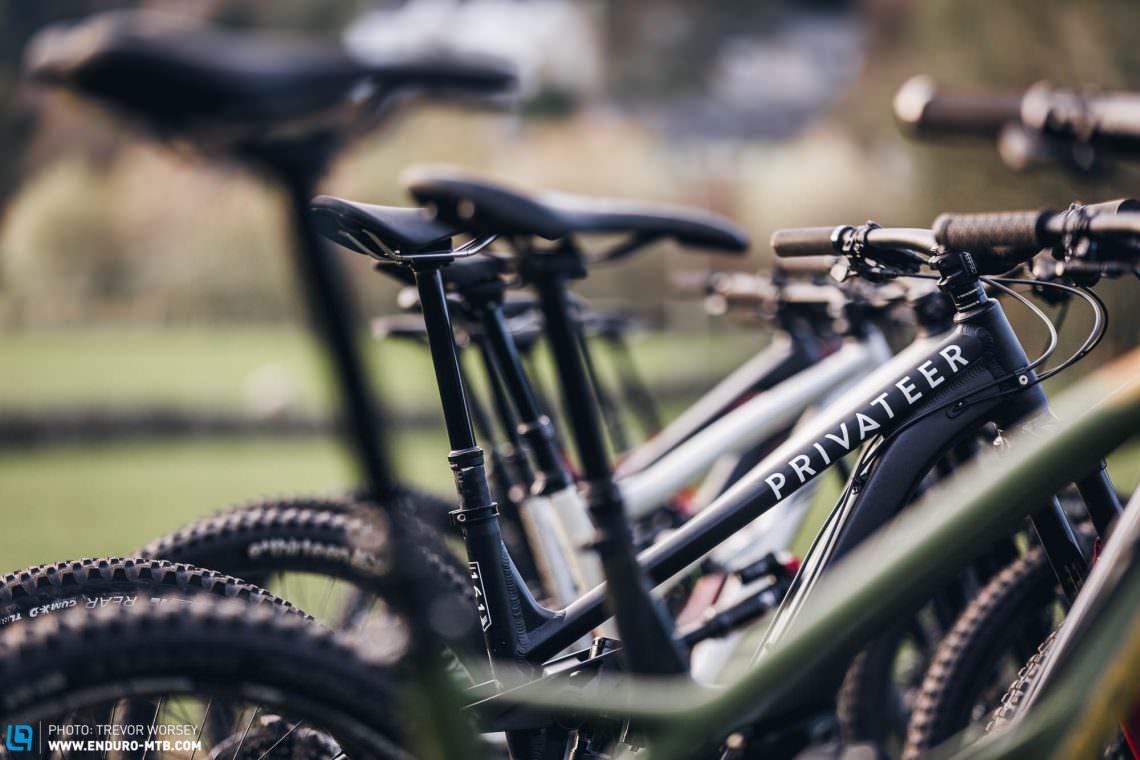
It’s the same with the Canyon Torque. The smaller 27.5” wheels and laid back angles seriously limit its enduro potential, but the massive travel and baby-Sender (Canyon’s downhill bike) angles make it the bike of choice for riders looking for an agile and playful park bike that is equally happy going sideways as it is forwards. Niche for sure, but good at what it does. We couldn’t quite gel with the Merida ONE-SIXTY 700. It may have been the linear suspension, small wheels, or the unsupportive RockShox Yari fork, but we were left coughing in the other bikes’ dust when the trails dived downwards.
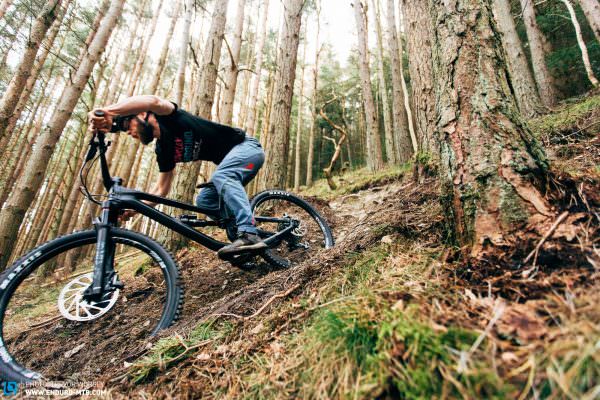

Looking like an underdog from the start, the Ibis Ripmo AF surprised us all. In contrast to Ibis’s sculpted and refined image, the Ripmo AF is a rough and ready heavy-weight brawler, a big-hitter with delicate footwork. If you love riding your bike hard and want something different, the Ibis RIPMO really punches above its travel numbers, but it needs better brakes before it can be fully unleashed. In contrast, the Trek Slash 8 is a dancer. Light on its feet it skips between lines effortlessly. Yes, the seat angle is slack, but it’s not ready for retirement yet. That leaves the Giant Reign SX, certainly the best Reign yet. The Reign SX is a bike that promises easy-going performance for most riders, but when you really wring it to the limit, its unbalanced suspension starts to feel like it’s running short of travel at the rear.
The best budget enduro MTB – Nukeproof Mega 290 Expert

And what of the winners? After weeks on the Nukeproof Mega 290 Expert, we found ourselves wondering why we would spend any more on a bike. Downhill it was a beast, hooking though corners with total ease and complete confidence. Even though it is not the lightest bike at 15.4 kg, we never felt that we were lagging behind on the climbs, while the build kit left nothing to be desired. You could hit ‘Buy Now’, unbox the bike and then thrash the life out of it for a season with no hidden costs. As a dedicated enduro bike, it’s our clear pick for Best In Test.
Click here for our full review on the Nukeproof Mega 290 Expert.
Our Best Buy award

For those looking for a more versatile ‘one-bike’ solution for enduro and trail duties, the Propain Tyee CF is a bargain at € 3,494. With a full carbon frame and ridiculous build kit, it goes hard on both the ups and the downs. For anyone looking for an enduro bike that can still cut it as a long-travel trail bike, the Propain Tyee CF offers a hell of a lot of bike for your money and takes our Best Buy award.
Click here for our full review on the Propain Tyee CF.
So there you have it. € 3,000–3,500 really is the sweet spot for enduro bikes. For weekend enduro races, bike park laps, group shreds and afterwork shuttle sessions, the winners of this test really are all you need. You won’t have any more fun, or go much faster, by spending twice as much.
The competitors
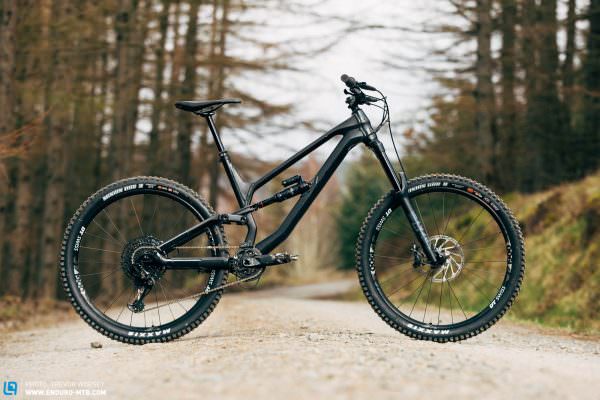
180/175 mm (f/r) | 15.8 kg in size L | € 2,799

170/146 mm (f/r) | 15.7 kg in size L | € 3,399

160/145 mm (f/r) | 15.7 kg in size L | € 3,498
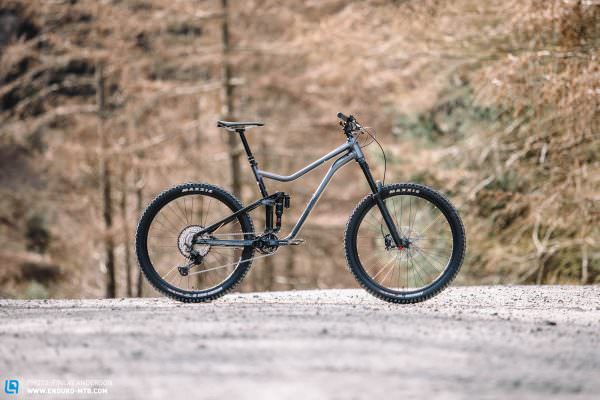
170/165 mm (f/r) | 15.1 kg in size L | € 3,199
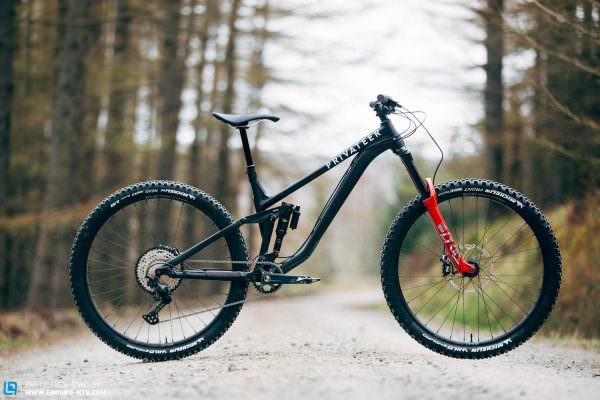
170/161 mm (f/r) | 15.9 kg in size P3 | € 3,199

160/150 mm (f/r) | 14.4 kg in size L | € 2,999

170/160 mm (f/r) | 15.2 kg in size L | € 3,199
Did you enjoy this article? If so, we would be stoked if you decide to support us with a monthly contribution. By becoming a supporter of ENDURO, you will help secure a sustainable future for high-quality mountain bike journalism. Click here to learn more.
Words: Photos: Trev Worsey, Finlay Anderson









